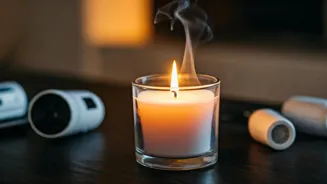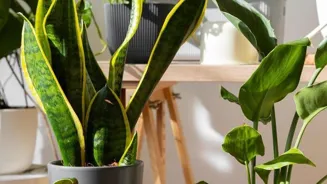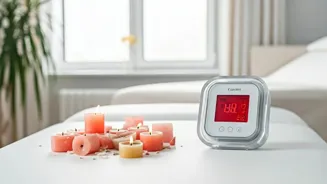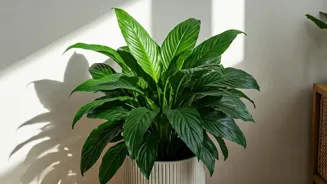Introduction: The Problem
During winter, enclosed spaces combined with less air circulation and the presence of pollutants from heating systems can make indoor air quality a significant
concern. These contaminants, stemming from both indoor and outdoor sources, accumulate within homes, potentially causing a range of health issues, from respiratory problems to allergic reactions. The right indoor plants not only help to filter out these harmful particles but also contribute to a more pleasant and healthy atmosphere overall, making them a worthwhile investment in your well-being.
Snake Plant (Sansevieria)
Snake plants, also known as *Sansevieria trifasciata*, are a popular choice for their air-purifying abilities and low-maintenance requirements. They excel at removing common indoor toxins like formaldehyde, xylene, toluene, and benzene. One of the remarkable aspects of the snake plant is its ability to convert carbon dioxide into oxygen at night, making it ideal for bedrooms. These plants are very adaptable and can tolerate various light conditions, from low to bright indirect light. Water sparingly, allowing the soil to dry out completely between waterings, as overwatering can lead to root rot. Their simple, upright form also brings a clean, modern aesthetic to any space.
Spider Plant (Chlorophytum)
Spider plants, or *Chlorophytum comosum*, are another excellent option for purifying indoor air. They're incredibly easy to care for and produce small 'spiderettes' or baby plants, making them a great choice for beginners and those who enjoy propagation. Spider plants effectively remove pollutants like formaldehyde and xylene. They prefer bright, indirect light and should be watered regularly, but allow the top inch of soil to dry out before watering again. Their cascading growth habit makes them perfect for hanging baskets or shelves, adding a touch of greenery to any room. Spider plants are also quite adaptable to temperature fluctuations and can thrive in a variety of household conditions.
Peace Lily (Spathiphyllum)
The peace lily (*Spathiphyllum*) is renowned for its elegant appearance and its ability to purify air, particularly removing mold spores. These plants are effective at eliminating benzene, formaldehyde, xylene, toluene, and ammonia, often found in common household items. Peace lilies prefer low to medium light and need consistent watering, especially during their flowering season. They are also fairly sensitive to overwatering. Their large, dark green leaves and striking white flowers add a touch of sophistication to any indoor space. The peace lily can also indicate when it needs water by drooping leaves, offering a visual cue for care.
English Ivy (Hedera helix)
English ivy (*Hedera helix*) is a versatile plant that excels at removing mold and other airborne toxins. It's particularly effective in reducing mold and can be beneficial for people with allergies. English ivy prefers bright, indirect light and requires regular watering, but it is also prone to root rot if overwatered. It can be grown in hanging baskets or trained to climb, adding a classic, traditional feel to your decor. However, it is important to be cautious about keeping English ivy out of reach of children and pets, as its leaves can be toxic if ingested. Its vigorous growth means it requires regular pruning to maintain shape.
Chinese Evergreen
Chinese evergreen plants (*Aglaonema*) are known for their easy-care nature and ability to thrive in low light conditions, making them ideal for various indoor spaces. They effectively remove benzene and formaldehyde. These plants come in a variety of colors and patterns, providing a decorative element to your home. They thrive in low to medium indirect light and require watering when the top inch of the soil feels dry. They are also relatively slow-growing, making maintenance easier. Aglaonema varieties are also known for their durability and their ability to tolerate neglect, which makes them perfect for busy individuals.
Boston Fern (Nephrolepis)
Boston ferns (*Nephrolepis exaltata*) are excellent air purifiers and add a lush, green touch to any room. They effectively remove formaldehyde, xylene, and toluene. Boston ferns thrive in bright, indirect light and require consistent moisture, so regular watering is essential. They also appreciate high humidity, which can be provided by misting the leaves regularly or using a humidifier. They are often grown in hanging baskets to showcase their cascading fronds. The plant thrives in areas that provide indirect sunlight and good air circulation. They are known for their resilience and can live for many years with proper care.
Aloe Vera
Aloe vera is not only a popular plant for its medicinal properties, known for soothing burns and cuts, but also for its air-purifying capabilities. It’s highly effective at removing benzene and formaldehyde. Aloe vera thrives in bright, indirect sunlight and requires infrequent watering. It stores water in its leaves, so overwatering is a common mistake. The plant's gel-filled leaves are easily accessible for use, making it a practical addition to any home. It's easy to propagate, creating more plants, and it is generally low-maintenance. Aloe vera also serves as a good indicator of air quality, as the brown spots on its leaves can be a signal of excessive chemical presence.
Rubber Plant (Ficus elastica)
Rubber plants (*Ficus elastica*) are not only visually appealing but also efficient air purifiers, removing pollutants like formaldehyde. They prefer bright, indirect light and need to be watered when the top inch of soil dries out. Rubber plants have large, glossy leaves and come in various colors, adding a sophisticated touch to any decor. Their strong, upright growth makes them an excellent statement piece in a room. Rubber plants can also tolerate a range of temperatures, making them adaptable to many indoor environments. Regular wiping of their leaves is beneficial to remove dust and enhance their appearance, thus promoting better photosynthesis.







